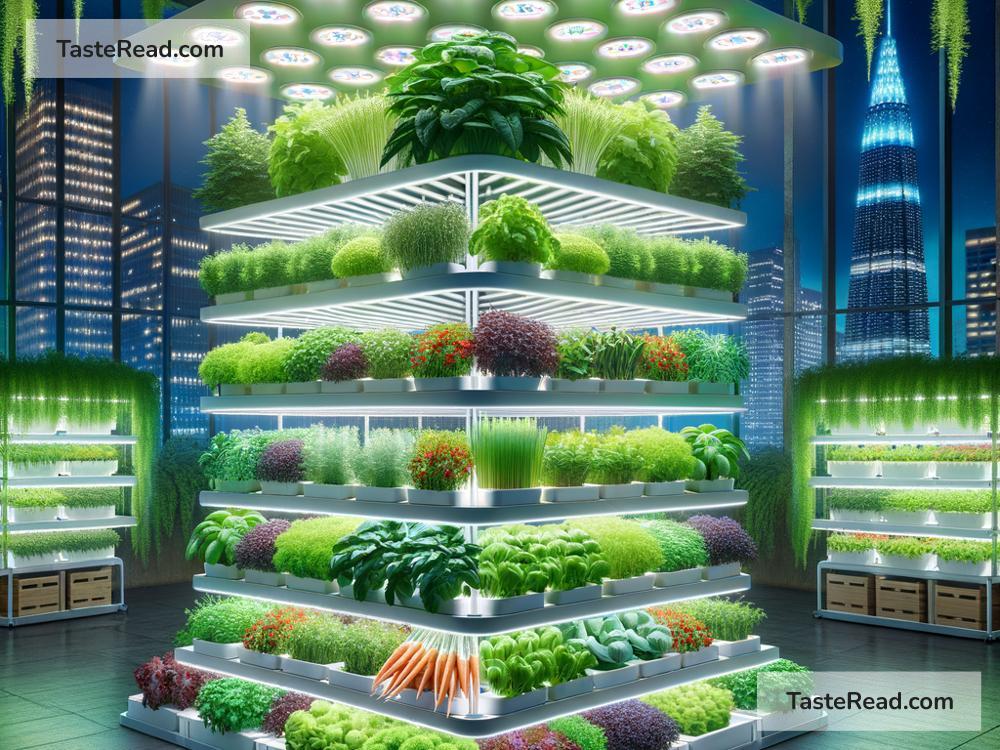Vertical Farming Innovations: Revolutionizing the Way We Grow Food
The world is changing, and so are the ways we grow food. With more people living in cities and farmland becoming scarce, traditional farming methods are no longer enough to meet the growing demand for fresh produce. Enter vertical farming—a modern method of agriculture that uses heights instead of sprawling fields. This exciting innovation is transforming farming and helping feed the planet in smarter, more sustainable ways. Let’s dive into what makes vertical farming so special and look at some of its amazing breakthroughs.
What Is Vertical Farming?
Vertical farming is a way of growing crops indoors, stacked in layers or shelves, rather than planting them outdoors in horizontal fields. These farms often use controlled environments like greenhouses or specialized buildings that allow farmers to manage light, temperature, humidity, and soil conditions. Some vertical farms don’t even use soil, relying on water-based (hydroponics) or air-based (aeroponics) systems instead.
By growing plants vertically, you save space and make it possible to produce food even in cities, deserts, or areas with extreme climates. Vertical farming also allows crops to grow year-round, unaffected by seasons or unpredictable weather. That means fresh food is always available, no matter where you are.
Innovations Driving Vertical Farming Forward
Vertical farming has been around for years, but new technologies are making it better, faster, and greener. Here are some exciting innovations helping this farming method reach new heights:
1. LED Lighting
One of the biggest improvements in vertical farming comes from using advanced LED lights. These lights provide the perfect spectrum of light for plants to grow, mimicking the sun without the heat. LEDs are energy-efficient and can be tailored to give plants exactly what they need to thrive. Farmers can even adjust the color, intensity, and timing of the light to boost growth rates. Thanks to LED technology, crops grow faster while using less power, making vertical farming more sustainable and affordable.
2. Automation and AI
Robots and artificial intelligence (AI) are taking vertical farming to the next level. In modern farms, robots often handle planting, watering, and harvesting, while AI analyzes data about growth patterns, pest risks, and weather conditions. Farmers can make better decisions and even predict problems before they happen. These technologies save time and money, allowing vertical farms to grow large amounts of food with fewer workers.
3. Hydroponics and Aeroponics
Most vertical farms use hydroponics or aeroponics instead of soil. In hydroponics, plants grow in water that is rich with nutrients, while aeroponics delivers nutrients through mist or air. Both methods use less water than normal farming—up to 90% less! This is great for areas where water is scarce. Plus, without soil, plants are less likely to get diseases and pests, which means fewer chemicals and pesticides are needed.
4. Crop Customization with Biotechnology
Biotechnology is helping vertical farmers grow crops that are perfectly suited for indoor environments. Scientists can modify plants to be stronger, faster-growing, or more nutritious. For example, some vertical farms grow leafy greens with higher levels of vitamins, or fruits resistant to indoor pests. The ability to customize crops ensures healthier food and fewer losses during production.
5. Energy Solutions
Energy use is one challenge for vertical farming, but new solutions are making it more efficient. For example, some farms use solar power or tap into energy from nearby industrial plants. Other farms recycle heat and energy within their systems to reduce waste. Innovations in energy technology ensure that vertical farming stays eco-friendly and cost-effective.
6. Smart Water Recycling
Water recycling systems are becoming an essential part of vertical farms. These systems clean and reuse water, so it doesn’t go to waste. Some farms have closed-loop systems, where water circulates endlessly without being drained. This technology is vital in areas where freshwater is becoming rare, ensuring that growing food is both sustainable and environmentally friendly.
7. Design for Urban Spaces
Vertical farms are now being built in innovative ways to fit into cities. From unused warehouses and shipping containers to skyscrapers and parking garages, these farms are popping up in unexpected places. Some even look like futuristic green towers. These designs not only save space but bring food production closer to the people who need it most.
Why Vertical Farming Matters
Vertical farming could be the answer to many of the world’s food problems. First, it helps us grow food in places where traditional farming isn’t possible, like urban areas or dry regions. Second, it wastes less water, energy, and land, which is better for the environment. Third, because crops grow in controlled conditions, they are healthier and free from pesticides. Finally, vertical farming reduces the carbon footprint of transporting food long distances since produce can be grown close to markets.
This new way of farming may also help fight hunger by providing sustainable solutions for food shortages around the world. It’s not just limited to leafy greens; with advances in technology, farms are even beginning to grow fruits, vegetables, and grains.
The Future of Vertical Farming
As technology evolves, vertical farming will become even more efficient and widespread. More cities will have local farms supplying fresh food, reducing dependence on traditional agriculture. Automation, AI, and clean energy will drive costs down, making vertical farming accessible to more people.
The possibilities of vertical farming are endless. It’s a glimpse into a future where fresh, healthy food is always within reach—no matter where you live. With its innovative spirit and commitment to sustainability, vertical farming is set to change the way we grow and eat forever.
So, next time you bite into a crunchy salad or juicy fruit, think about how vertical farming could be shaping your plate—and the future of farming.


